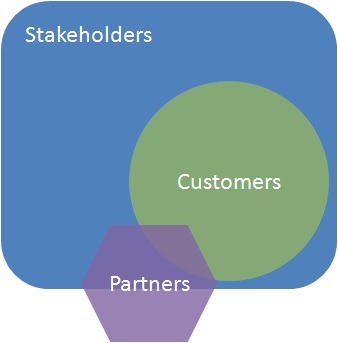 Strategic planning, as a structured and systematic process, is successful when it is leader-led and overcomes the five reasons 70% of all strategies fail. Learn how to see your plan through to success. The strategic planning process is where leaders of an organization establish the vision of the organization’s future and then develop and implement the actions necessary to achieve that future. This article expands on the strategic planning concepts addressed in Think Big, Take Small Steps and is designed to help you achieve success in your strategic planning process.
Strategic planning, as a structured and systematic process, is successful when it is leader-led and overcomes the five reasons 70% of all strategies fail. Learn how to see your plan through to success. The strategic planning process is where leaders of an organization establish the vision of the organization’s future and then develop and implement the actions necessary to achieve that future. This article expands on the strategic planning concepts addressed in Think Big, Take Small Steps and is designed to help you achieve success in your strategic planning process.
Aligning Your Strategic Plan to Your Key Stakeholders, Customers, and Partners.
This blog will round out our discussion around How to Conduct an Organizational Assessment. A good strategic plan should lay out a systematic plan to close the “gap” between where you are now and where you are going. This “gap” is identified by an organizational assessment’s results. A good and throughout assessment will help you define a very strong strategic plan. Last, but not least, you need to ensure your plan is firmly aligned to you audience.
Five years ago, I was brought in, at the last minute, to help a government organization develop a strategic plan. They had already created a strategic plan the year before. They spent several sessions in a conference room wordsmithing a mission and vision statement and they created goals for each of the division chiefs in the organization–they wanted to make sure each chief was doing something strategic. They put this plan into a beautiful and colorful glossy book and then presented it to their senior service commander.
He took one look at it and simply said, “Here’s some money, go get ‘these people’ to help you out.” ‘These people’ ended up being me. When they sat down with us, at first they said, “All we need to do is to get to some key process indicators and we’ll be fine.” Luckily, we were able to convince them that they needed to start over.
Their glossy strategic plan was 30 pages long. It was well written and said all the right things (on the surface). However, one thing really stood out to me to this day. In those 30 pages, they mentioned the word “customer” 5 times. Nowhere in the entire plan did they say who those customers were. The customer was important–at least five times important–but they had no idea who that customer really was.
The problem is that I see this everywhere. Organizations, because of business and management education, most leaders know that the customer is very important, but very few have ever sat down and identified who these customers are.
What’s worse is that they really don’t know their entire audience–their stakeholders, customers, and partners.
This is one of the first things I show to the leadership in the strategic planning session. Throughout the organizational assessment effort you need to be keen to discover who these audience members are and which ones are the most important. Then they need to be presented to the leadership at the start of the planning session because this is who–especially customers–you are really building a strategy for.
Stakeholders, Customers, and Partners.
The first thing I do for the leadership is define what I think a strategic planning audience is. I define what stakeholders, customers, and partners are and how they inter-relate. You might feel differently about this or have different names and that’s fine–just make sure everyone knows your definitions up front. Once defined, very little can be done to argue the point. If you don’t define them, no one will agree.
 Stakeholders are people and groups that have an interested in what your organization does.
Stakeholders are people and groups that have an interested in what your organization does.
Customers are people and groups that drive the work of the organization. All customers are stakeholders, but clearly all stakeholders are not customers.
Partners are people and groups that you work with to deliver the work. Some partners might be stakeholders and customers of your organization and some might not.
These definitions are pretty simple for people to understand and a venn diagram really helps paint the picture.
For presentation I make a list of all the stakeholders, customers, and partners on a slide and I rank order them based on what I’ve learned in the assessment. The leaders, in turn, review, adjust, and re-rank them as required.
This all seems like a simple concept, but its immensely important to the true success of any strategic plan. If you have not built your plan in full alignment of your key audience, you’re probably going to have significant trouble implementing it and being successful. What’s worse, if you don’t build your strategy with your customer in mind, then I’m going to question why do you even have a strategy–it’s nothing but a self-licking ice cream cone.
So, 70% of all plans fail to some level; however, by following these guidelines you can help ensure your strategic plan will be one of the 30% successes that everyone reads about.






